Bakiga People and their Culture in Uganda
Who are the Bakiga People in Uganda? The Kiga people, or Abakiga ("people of the mountains"), are an ethnic group located in northern Rwanda and southern Uganda.
The Kiga speak a Bantu language called Rukiga. They are sometimes referred to as the Chiga or Kiga, while the singular form is Omukiga.
It has been suggested that the Bakiga arrived in what is modern day Uganda from Rwanda between 1600 and 1700.
Additionally, a big number Bakiga were still living in Rwanda at the time of colonization. An Anglo - German Agreement signed at Brussels on May 14, 1910, modified part of the boundary between British and German territories initially established as the parallel of one degree south latitude by the treaty of 1890.
Modified were the sectors between the Congo tripoint and the junction of the Kakitumba and Kagera, comprising the present Rwanda - Uganda boundary, and between the junction and the second crossing of the parallel of one degree south latitude by the Kagera, comprising the western segment of the present Tanzania - Uganda boundary.
Details of the final delimitation and demarcation of the Rwanda - Uganda boundary between the Congo tripoint of Sabinio and the southwestern branch (Lubirizi) of the Tshinzinga (Muvogero) are given in an Anglo-German protocol signed at Kamwezi on October 30, 1911.
Therefore, many Bakiga became Ugandans by defacto in 1911 when the current international boundaries of Uganda were formally finalized.
The Bakiga people live in southwestern Uganda and North Eastern Rwanda, mostly located in Kabale district (and Byumba prefecture in Rwanda), and number about 8% of the population of Uganda or nearly 3 million according to Population Estimates,
Another 3 million have been naturalised in other ethnic regions of Uganda such as Bunyoro, Tooro, Buganda, Northern Tanzania, Eastern Congo and Rwanda as well as those living in Europe and North America.This puts the total Population of People of Kiga origin at about 6 million, roughly the total population of the State of Arizona.
History of the Kiga people
Pre-colonial period
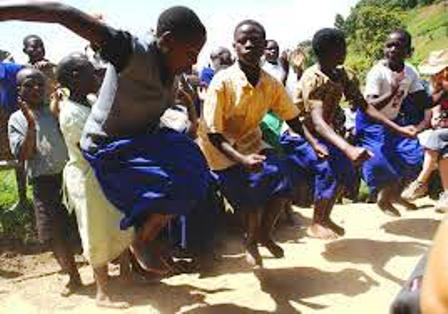 The Kiga people on their traditional dance
The Kiga people on their traditional danceThe Kiga people are believed to have originated from Rwanda. It is even in one of their folk songs - Abakiga twena tukaruga Rwanda, omu Byumba na Ruhenjere, - meaning that all of us Bakiga, we came from Rwanda in Byumba and Ruhenjere (called Ruhengeri in Rwanda).
Both Byumba and Ruhengeri are Rwandan cities. The Bakiga are believed to be the descendants of Kashyiga, who came to be called Kakiga son of Mbogo from the small Kingdom of Bumbogo in Rwanda later. He came to form the present community of the Bakiga of Kigyezi or Kigezi as a result of Immigration.
Before the year 1700 A.D., Rwanda is believed to have been occupied by the Twa people as the first group to occupy it, and then was later on occupied by the second immigration of the Hutu people, and the third was the Tutsi. Rwanda was organised in small states and chiefdoms but under one ruler called the Mwami.
Originally, he was also known as Omukama. Among the Bakiga, the ruling person was therefore named Mukama, equivalent to Mwami in other parts of Rwanda.
Originally, the name Mukama was not a name, but rather the title of a Ruler. But later on it came to be recognised as a name, implying to one ruling man. In the Bakiga culture, the name was later attributed to God as Lord. Among the Bakiga, the name Mukama is not a female name.
There are not many Bakiga called by the name Mukama. It is a name that was reserved to be used in the family of the ruling clan, the Bamuhutu, who possess the inheritance powers.
If there is any person bearing the name Mukama he must be a Bamuhutu, specifically a Mungura/ Mwitira, or belong to the royal clan of the Bamuhutu.
Not even in Rwanda among the Tutsi who took over the Kingdom after Mbogo had been defeated, did they dare to use the name Mukama because it signified a more fundamental power than they had assumed.
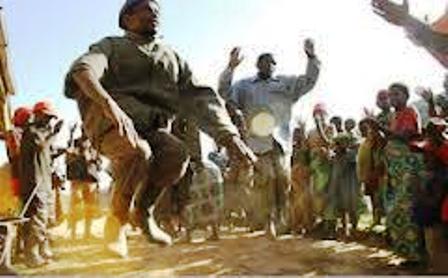
Similar names could be like Byamukama, Kyomukama, Womukama, Kamukama, Bainomukama and so on. Therefore, the title for the King in Rwanda remained Mwami (Omwami), whereas in the Rukiga (the Kiga Kingdom) they continued to use the title Mukama (Omukama).
In the first stages of the formation of the Kingdom of Rwanda, the major states were Bumbogo, Buriza, and Rukoma (These areas kept their names, and are located in central Rwanda near the capital city of Kigali). Each of these states was represented by a clan chief.
The first Mwami was Mbogo of the small state of Bumbogo. At that time, the Hutu, Tutsi, and Twa ethnic groups were all present in Rwanda, living side by side. Though these three major groups stood out, their indigenous clans remained as the point of reference due to their totems.
Mbogo, who belonged to the Abungura clan, today known as Abahitira clan, is believed to have been conquered by his friend Kirima (Cyirima) of the Abanyiginya clan.
Kirima accused Mbogo of mistreating the people, and Kirima promised he would be a better chief, though he could not claim to be a King or Umwami. He asserted that Mbogo was using testicles of men to decorate his royal drum, Kamuhagama, the symbol of his kingdom.
Kirima is believed to have made progress, but his time was short lived by the first invasion of Bunyoro, led by Cwa I son of Nyabwongo. (It remains to verify, whether Nyabwongo is same as Labongo, the first Babiito king of the Bunyoro-Kitara kingdom in Uganda.)
Until now, Mbogo, the King, is not identified with any tribe, but rather with the clan of the Abahitira (Abungura). He was very old and did not want to fight Kirima. His son Kashyiga (Kakiga) fled to the north, trying to regroup so he could come back and fight.
The departure of Kakiga left a big wound to the state of Bumbogo. Because Kakiga fled with the royal drum Kamuhagama, Kirima could never claim to be King.
The newly established Kingdom was taken over by sympathizers of the Tutsi king Kirima. But then came the first of two invasions of Banyoro (People of Bunyoro) under Kirima's successor Mukobanya.
In the Rwandan history, Kirima is known as Cyirima I Rugwe. In contrast to the classic chronology, modern historians dispute that his successor, Kigeri I Mukobanya, was his son. They rather insist that he was son of the king of Bugesera, a kingdom located south of Kigali ruled by the clan of Abahondogo.
Cyirima stole his wife, and it is assumed that she was already pregnant with Mukobanya. Already at the reign of Cyirima, Mukobanya became a great worrier because he could annex Bumbogo, Buriza, and Rukoma among others, expanding the Rwandan territory from a few hills to a large territory.
During his own reign, he inflicted a strong defeat to the mighty Banyoro army, and it had to withdraw from Rwanda. They attacked again during the reign of his successor and defeated him. Mukobanya was the first true expansionist king of Rwanda, but his acceptance as king seems to have been a result of his bravely.
In the mid-eighteenth century, the Rwandan kingdom became far more centralized. It expanded continuously, reaching the shores of Lake Kivu.
This expansion was a combination of military conquest with a migration of Rwandan populations spreading their agricultural techniques and social organization. All these factors extended the political control of the Rwandan king, the Mwami.
Once this was established, camps of warriors were established along vulnerable borders to prevent incursions. Only against other well developed kingdoms such as Gisaka, Bugesera, and Burundi expansion was carried out primarily by force of arms.
Under the Tutsi monarchy, the economic imbalance between the Hutus and the Tutsis crystallized, a complex political imbalance emerged as the Tutsis formed into a hierarchy dominated by a Mwami or 'king'.
The King was treated as a semi-divine being, responsible for making the country prosper. He adopted the sacred drum Kalinga as the symbol of the King. He also hung the genitals of conquered enemies or rebels on Kalinga.
This treatment will later on define the relationship between the Tutsi, the Hutu and the Twa peoples. Originally, the Hutus were among the nobility. They made up 82–85% of the population, and were mostly rich and simple.
But later on they were made to live a poor peasant life. With the centralization of the political power, the Tutsis took the show, monopolized all privileges of the kings, and came to be the ones called the Mwamis.
Before the nineteenth century, the Tutsis held real military power, while the Hutus possessed supernatural power.
The newly self-proclaimed Kings changed the nobility of the Hutus to Abiru. In this capacity, the Mwami's council of advisors (abiru) was exclusively Hutu and held significant sway.
By the mid-18th century, however, the Abiru became increasingly marginalized. However, as the Tutsi ruled, they were constantly remembered that Kakiga was to return, which made them nervous, but also motivated them to increase their defence system.
As the kings centralized their power and authority, they distributed land among individuals rather than allowing it to be passed down through lineage groups, of which many hereditary chiefs had been Hutu. Most of the chiefs appointed by the Mwamis were Tutsi.
The redistribution of land, enacted between 1860 and 1895 by Mwami Rwabugiri, resulted in an imposed patronage system (ubuhake), under which appointed Tutsi chiefs demanded manual labor in return for the right of Hutus to occupy their land. This system left Hutus in a serf-like status with Tutsi chiefs as their feudal masters.
Under the Mwami Rwabugiri, Rwanda became an expansionist state. Rwabugiri did not bother to assess the ethnic identities of conquered people and simply labeled all of them “Hutu”. The title “Hutu”, therefore, came to be a trans-ethnic identity associated with subjugation.
While further disenfranchising Hutus socially and politically, this helped to solidify the idea that “Hutu” and “Tutsi” were socioeconomic, not ethnic distinctions. In fact, one could shed his Hutuness (kwihutura), by accumulating wealth and rising through the social hierarchy.
The Tutsi monarchy was paralysed by the colonisation through Germany followed by Belgium. It was ended by Grégoire Kayibanda shortly before Rwanda's independence.
He founded a political party known as MDR-Parmehutu (Mouvement démocratique republicain Parmehutu; French: "Parmehutu Democratic Republican Movement"). Kayibanda overthrew democratically the Tutsi monarchy of Mwami Kigeri V in 1961, and appointed a government of Hutus.
After the independence, in July 1962, Kayibanda became the first president of Rwanda. In the general elections of October 1963, MDR Parmehutu won all seats in the parliament. In the coup of July 1973, Kayibanda was ousted by Major General Juvénal Habyarimana, and the Parmehutu party was dissolved.
Habyarimana was a Hutu from the clan of Abungura (Abahitira). It is said that his father migrated to Rwanda from the Bakiga of southern Uganda. He installed himself in the northwest part of Rwanda, where Habyarimana was born and raised.
Habyarimana was killed by his presidential guards, who fired missiles at his plane in order to start the genocide, planned in advance by the Akazu.
President Paul Kagame was accused by France of this crime. Interestingly, Kagame is a Tutsi who grew up in Uganda as a refugee. He is from the Abega clan, which accounted for many queen mothers in the Abanyiginya dynasty of Rwanda.
Getting back to the Bakiga, it is now clear that Kakiga was responsible for the formation of the Kiga Kingdom, its clans and sub-clans, and all the direct descents of his children. Each clan was identified by a totem and also by what they were forbidden from eating. For example, the Ba-Mungwe’s totem was the bushbuck and they were prohibited from hunting it for food.
All these measures were intended for the protection, sustenance, and well-being of the clans as they were not competing for the same food. There are many clans and sub-clans in the Kiga tribe, but the major ones are:
Ba-Mungura (the Royal Clan in which the Mukama was supposed to be born), Ba-Musigi (the clan that was supposed to keep the defence of the King or the Mukama), Ba-Mungwe, Ba-Kinyagiro, Ba-Mugiri, Ba-Muhutu, Ba-Mugera, and Ba-Mugyesera, Ba-Mugyeyo. Each of these clans has sub-clans.
The Abukuru b-ekika was a committee of elders chosen by the clan to issue rules and administer justice. If a case was particularly serious and involved more than one clan, the cases would be heard publicly. An Omukuru, ideally a wise elder who knew the customs and traditions of his people, and who could be trusted to give fair advice and justice, was elected to preside over this expanded court.
Kakiga, the son of Mbogo from the state of Bumbogo and of the Abahitira (Abungura) clan, made his move towards the west and settled in the forests of Kagarama, the mountains of the present border of Rwanda and Uganda in Kigezi district.
In around 1700, Kakiga established his own community and wished to initiate a new Kingdom, but wanted to go back to fight the Nyoro invaders, first. Kakiga found out that the new land was very fertile and had good grass for the cattle. Together with his friends, they made a deal to stay. These became a new group of people called the Abakiga or Bakiga.
As time went on, the population grew and Kakiga wanted to expand his localities. He started sending groups to search and conquer.
He sent the first group towards the east in the parts of Karweru, where the group of the Abasigi was supposed to conquer.
This group was under the leadership of Rwandeme. This was believed to be the strongest group that was to fight the forces of Ankore. Unfortunately, Rwandeme lost the Royal drum.
Since the Kingdom could not stand without a drum, Rwandeme never dared to return to Kagarama. He remained in the mountains of Karweru and his group intermarried with the Ankore people. This explains why most of the Abasigi are found in these parts of the region. It also gives the reason to why there are many different accents, intonations, and spellings in the Rukiga language.
Out of anger at his father, Mbogo, Kakiga ordered obligatory circumcision of all male children. Many did not support this, but he maintained that every Mungura shall have to be circumcised, and that Kings must be circumcised too. This is why the Abungura is the only clan in the entire Kiga tribe that undergoes circumcision. The circumcision was to be taken at the eleventh (11) age.
The rest of the Bakiga do not circumcise under cultural obligation. But these days, some take it for other reasons, but not because they have to. Kakiga also left the Kiga legacy of the system of naming.
The Kiga people take the family name after their grand father, or after their father has died. That is why, it is very hard to trace the lineage of the Bakiga through family names. But among different clans, they still hold the norm of the founding father. For instance, Mbogo could be the son of Rwambogo.
But in like a seventh generation, Mubangizi could be the son of Mubanga. All in all, the same names would be revolving around in the same family. But nowadays, many educated Bakiga find it useful to use their parent names, even if they are still alive. Even the Royal clan does it.
This separation and rebellion will mark the complexity of the Kiga community, letting it look as though she never had a political system.
The major factors that led to the failure of the formation of the Kiga kingdom to the fullest were, mostly, a lack of trust and fear of Kakiga, the lack of a military strong enough for a successful invasion, the sudden prosper and discovery of fertile lands. Kakiga, though he lost the royal drum, he continued to be strong.
He sent another group to attack further in the north. This was the group of the Abaromba and the Abahimba. These diffused to most parts of Muko, Rubanda, and Kihihi.
Other groups went to Kakore and Mparo, and proceeded to Nyakishenyi and Nyarushanje. We still find a mixture of Ankore and Kinyarwanda accents and intonations in these areas. Kakiga attempted to make another drum, but he could not get testicles of brave enemies to decorate it.
He only made declarations that his sons and daughters should not marry any foreigner, because he believed that the pure King should be from Rwanda.
He made his shield out of cattle skin. He promoted agriculture and his tools were mainly the panga, the spear, and the hoe. He enjoyed wrestling, dancing, hunting and keeping cattle.
The most common figures of the few known Bungura Royals include: Muhanga (Mubanga), Rwabutare, Kamboji, Kabogo, Katumba, Katamujuna, Kahigyi, Bakunzi, Mbogo, Rwakasole, Mungura, Rwambogo. The Abungura, though few as they may be, are still the recognized Royal clan of the Kiga tribe and most of them live in outskirts of Kabale town, and still enjoy their hereditary wealth.
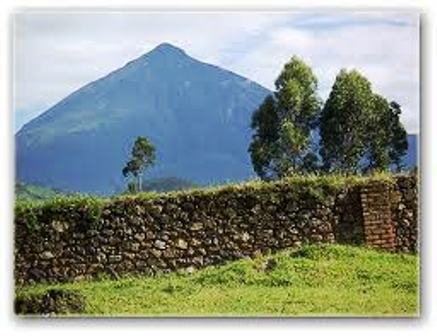
They are not wealthy in the strict sense of the word. They are renowned for their love for research and education. The Bungura were also known for their tough leadership, and at times, they are referred to as arrogant, and aggressive.
There hs been a variety of experiences in the life of the Bakiga, such as interactions with other Kingdoms, religions, and many other cultures. The bakiga are very hospitable and enjoy the privilege of having a mixed language. Rukiga, as a language, is a combination of the influence of the accents and alphabets from Rwanda, Ankore, Toro, Bufumbira, and Swahili.
Before the Bakiga were educated about Islam and Christianity, they believed in one God. The Bakiga understood God as creator who is neither male or female, known as Ruhanga.
God is also known through many attributes. As the supreme elder and the ruler of the universe, he is called Mukama. When associated with the power of the sun, he is Kazooba-Nyamuhanga.
In his aspect as the one who makes things grow, he is called Biheeko. Many Bakiga with the influence of Christianity adopted 'theo-phoric' names. These names are eschatological (Turya-guma-nawe) meaning we will be with God for ever.
While the Bakiga would later be classified as Hutu, originally they considered themselves an entirely separate people. In modern Rwanda, the Hutus of southern Rwanda are called Banyanduga, while the Hutus in the northern Rwanda are collectively referred to as Bakiga.
The bakiga in Colonial period
The Bakiga communities defended their independence until the collaboration of German colonial forces and the royal troops of theMwami or Mukama succeeded in incorporating the region into the Rwandan colonial state at the turn of the twentieth century.
The region remained a hotbed of discontent against the central authority for many years. One of the strongest influences upon the character of the Bakiga was the anti-centrist cult of Nyabingi.
After the death of the Rwandan King, Kigeri IV Rwabugiri in 1895, one of his wives called Muhumuza fled to the mountains of Kiga and proclaimed an anti-colonial rebellion in 1911.
She was captured the same year and her resistance taken up by Ndungutse, generally recognized as the son of Muhumuza and Rwabugiri. Ndungutse was killed, though sporadic rebellions sprang up until the advent of Belgian rule after World War I.
The conditions for these rebellions were created by the system of forced labor tribute (ubareetwa) imposed on the Bakiga by their new colonial masters. P.T.W. Baxter noted that, "The proud boast of the Kiga is that they were never, as a people, subjugated by either Tutsi or Hima." However, this resistance was, paradoxically, in large part led or inspired by disaffected members of the Tutsi elite.
The Bakiga became one of two major forces, along with the hill-level tensions of Hutu peasants and Tutsi chiefs, in the formation of "Social Revolution" of 1959. In the pre-colonial system, land usage was controlled by chiefs who owned land (bakonde) or controlled access to it (bagererwa).
With the onset of colonial rule, these chiefs were technically replaced by southern Tutsi and Bakiga who agreed to work for them. However, the old order was never entirely erased, resulting in tensions between the two. While the olderbakonde yearned for a return to their old status, younger generations of bakonde were able to merge their claims into that of the anti-colonial/Tutsi revolutionary movement.
Modern Life Of Bakiga People
When the British came to nowadays Kabale in 1908, they found farmers and hunters living without any central authority as they preferred to exist in this way not wanting to be organized in manner that the other Rwanda groups were.
There was frequent fighting, plunder and raids from all sides, of recent epidemics, famines, and a locust invasion had challenged the society. There were very many clans and so, the Europeans applied the concept of a tribe to the clans, with little grounds for it because the Bakiga are a myriad of very distinct clan groups.
Though the ruling class of the Abahitira existed and still exists today (Abungura had collapsed), at that time, the groups were not united in any way and the language they were speaking was a dialectical variation of Runyankore, Kinyarwanda, Kihororo and some kind of Kihaya.
The term "Bakiga" could be translated from Kinyarwanda as "Highlanders", and it was in the beginning most frequently used by the Royal clan of the Abungura, though at later time, they were mostly referred to by the outsiders, and rarely did the people themselves recognise it as a whole tribe.
Over time it has become a part of local consciousness and today, it is widely known as the people of the hills. However, they did not start out as a single distinct tribe as are other large tribal groups in the region. Bakiga are very hardworking and warrior type.
The warrior nature of the Bakiga made it difficult for colonisers to penetrate their culture. The time the colonialists came to Kigezi, they could not influence any single person since they had not yet formed a single bdoy of kingdom, because, it was still underway.
Also because, of the internal conflicts, the other clans feared the rule of the Abungura and they had resorted to despising them as too tough and ruthless rulers, however that is how many ruling classes tend to behave.
As sporadic attempts of Bakiga's violent resistance to foreign rule often formed around religious cults, entire traditional religion had to go underground to please the administration. Indigenous people initially thought that a convert to Christianity would lose the reasoning capacity and become an idiot.
They equated Christianity with colonialism, and when they refused one, they felt obliged to reject the other - or to accept both, if they accepted one.
The year 1929 could indicate the final acceptance of the package, when those Bakiga who had decided to try to influence the system from within were eventually given the leading posts, and the time of home rule under European supervision began.
A glance of the Bakiga 40 years after Uganda's independence would give an impression of thoroughly prevailing European influences.
The Bakiga are majority Christian (Muslims are few) and starkly divided into Catholics and Protestants, a division which strongly polarizes communities. One's religion can determine professional prospects and religious preferences heavily influence local political elections.
The Bakiga are very developmental. They love new things and enjoy life. In ancient times they had one thing to admire from colonisers, their way of life. Most of the Bakiga dream of having a good life, and decent living.
The European way was a perfect image for them. Remember that the state of denial of kingship would still come up in trying to imitate the high life. So for the Bakiga, a European-style home, imported objects are admired, and locals dress in a Western way. As in most of Uganda, people are extremely concerned about clothing. To "look smart" is a priority for anyone who can afford it.
The elaborate, today, traditional weddings of the Bakiga are being neglected by anyone who can afford a Western-looking ceremony. Clothes are borrowed, music equipment and generators brought to the area, every possible thing done to imitate foreign customs.
At the meetings of district councils, English is used although everybody is a Mukiga, though it is the problem of the entire country. Parents who know English well, sometimes resort to speaking it with their children. Those who use English are supposed to be educated and successful.
Festo Karwemera, a respected elder from Kabale, offers this general comment: "Accepting the culture of the West is a result of the inferiority complex due to ignorance emanating from the fact that they are the ones introducing civilisation in this land and we tend to assume that everything they do is the best. Their way of living is clean and attractive hence positive because nobody takes trouble to find out how best we can modernise our culture in our own way."
Traditional Life of Bakiga
The traditional Bakiga were a highly segmented society who came to Kabale in south Uganda from today's Rwanda. They believed in Ruhanga, the Creator of all things. They also had several cults, among which the most important was Nyabingi - the spirit of a much respected rain-maker.
Bakiga were mainly agriculturalists, and kept significantly less livestock than other pastrolist groups in neighbouring tribes.
They grew sorghum, peas, millet, sweet potatoes, vegetables, and beans. These were supplemented with pumpkins, yams and variety of green vegetables. Meat was food reserved for special events in the community, mainly for births, weddings and funerals.
Food was always prepared in abundance. It was and is still considered good manners for a visitor to join a family eating a meal without invitation.
The Bakiga were producing beer, omuramba, from sorghum, as they still do today. To enjoy it, people would sit on wooden stools surrounding a pot, and drink it through long tubes.
The non-fermented form of the same sourghum drink, called obushera, was consumed hot or cold. Some among the Bakiga were great ironsmiths who were making hoes, knives, and spears. Pottery was also highly developed, and a wide range of carpentry existed. They reared bees and produced honey. Women and men were both involved digging and bush clearing.
Men were solely responsible for erecting the housing magde out of grass thatch and papyrus. After a government decree in 1935 these hut walls were made out of mud, but still thacthed with wild grass or sorghum stalks. Nearly all activities were done communally.
Men were dressed in one cow hide, in two if they were rich. The skin hung from the shoulder, covering private parts. A man would belt himself for a fight or a dance, while for clearing land one would normally be naked. Women used skirts made from several skins. A skin garment covered the torso. A woman of a wealthy husband wore brass rings on her legs and arms. These rings could extend from the wrist to the legs, and from the ankles to just below the knees.
Virginity was very important. If an unmarried girl got pregnant, she would be taken to a forest, tied to a tree, and left to the mercy of animals.
Alternatively, she would be thrown over a cliff. Kisizi Falls were most used for this purpose. At Lake Bunyonyi, a one meter high island was used for dumping these unfortunate girls. Migrating tribes or nomads unable to dowry for a bride would sometimes rescue these girls and take them for a wife. In these instances, the girl could never be returned to her community and had to move away.
Though these practices have been stopped in recent times, unmarried girls or women who get pregnant today still face severe forms of alternative social sanctions within their communities or clans.
Marriage needed to be preceded by a payment of bride wealth, which meant cows, goats, and hoes. Ploygamy was the exception rather than the norm, practiced in specific clans or segments of households when widow inheritance occurred following the death of a married family member.
Women of a polygamous man would not be from the same clan, because marriages were one of the rare things to bond together a very politically segmented society. A girl spent about a month in seclusion before marriage, to become well fed and instructed in home management.
Although permitted, divorce was very rare and greatly discouraged. When it occurred, common reasons for divorce included if a husband or wife was barren, lazy, or had other bad unsociable traits. Divorced people could remarry, however, the woman's family could expect less bride wealth next time.
Disagreements that could be leading to divorce were first tackled by consultation of elders. Settling disputes was a major role of elderly members of a clan. Clansmen elected a lineage head on the criteria of character (truthful, brave, a war-leader) and power (a rich man, a medicine man, or a priest).
Different lineage heads would gather and publicly discuss potential issues of wider concern. What lineage heads did not solve together could result in fighting between groups. The Bakiga were natural born-warriors. They were known as tough, hardworking people that made formidable enemies. They still are.
Bakiga Traditional marriage
Joseph Eledu from Soroti will not dare marry a Mukiga woman. "They are very tough, they can beat up a man," he said. The way they talk, even their physical appearance, intimidates him, he said. His fears aren't entirely baseless.
The Bakiga are known to be very hot tempered; a Mukiga woman will not hesitate to lift a saucepan of food off the fire and splash it in your face if there is nothing within reach to hit you with. But behind the aggressiveness lies lovers who will stop at nothing to please their men, or women.
The Bakiga of southwestern Uganda migrated from Rwanda centuries ago. They are slightly over 1.6 million, about seven percent of the total population. Their district, Kabale, has one of the most beautiful landscapes. Because of its undulating hills, it has been dubbed the 'Switzerland of Africa.'
The hills lie in picturesque chains of ridges, and between them wind streams, bordered by papyrus swamps. Homes are built on tops or sides of hills. It is a millet zone, too cold for bananas, too hilly for cattle. It is here in the hills that the Bakiga grow their millet, maize, peas, and potatoes and tend their flocks of sheep and goats.
Historically, the Bakiga had no kings. They are independent spirited, energetic, straight-talking, aggressive people. They are brave and natural born warriors.
Romance and marriage among the bakiga people
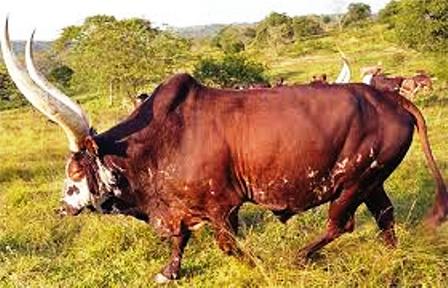 the price of bride price and marriage among bakiga
the price of bride price and marriage among bakigaMay Mandelbaum Edel writes in The Chiga of Western Uganda, that as a girl approached puberty, she started conducting herself in a ladylike fashion. Tomboyish manners like whistling and climbing would be unseemly. She would prepare herself for matrimony by 'pulling' her labia minora, in which she would be instructed by friends a little older than herself.
A girl had to stay pure. It was terrible if an unmarried girl became pregnant. A mother could try to help her to abort or conceal it but once the men - her father and brothers learnt of it, they took drastic action.
The girl would be beaten to confess the name of the lover, yet it was taboo for a girl to reveal the name of the man. The girls rarely confessed. If the girl never ran way, her father would kill her, usually by throwing her over a cliff. Kisizi Falls was most used for this purpose. Or, they would be dumped on Akampene, a small island in Lake Bunyonyi.
If her parents managed to marry her off to her lover, when the child was about to be born, she would retire to a secluded place in the bush, bear it there and strangle it. She would then be purified by a ritual specialist.
A Mukiga boy's experiences of sex began as early as he liked, and the wives of his elder brothers were not inaccessible to him.
Men preferred young wives. Marrying off a daughter before puberty was frowned upon. It was also inadvisable to delay too long after puberty. There is a proverb that says, 'vegetables are sweet to eat while they are still tender'
Marriage negotiations
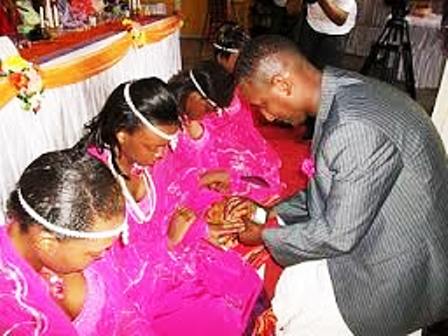 Marriage negotiations among bakiga people
Marriage negotiations among bakiga peopleAt the groom's home, celebrations would be on for okutaasya, receiving the girl. The groom, well washed and groomed would be eagerly and nervously waiting for her. On arrival, she would kneel at the entrance.
The groom would tap her with a little twig, saying, 'ogamba rumwe gambe kabiri, 'you may speak once, but I will speak twice,' indicating that he will be master in his household. She would be led into the house where her mother-in-law greeted her.
She would go to the back room and weep some more, while the groom's relatives and her escorts feasted and danced. She could eat a little, daintily, but if she forgot her manners and started eating greedily, the married woman who had accompanied her, and who would spend the first night there with her, would pinch her to remind her that she was under observation.
Towards cockcrow a special ceremony would take place. The girls would be awakened and they would begin to sing. The bride's brothers would be given beer and they would go into the inner compartment of the hut and bring out the wailing bride.
The groom would urinate on a stool and he would dip his hands in the urine. The brothers would pull off the girl's skirt and seat her in the hands of her husband on the stool. She would be struggling all the while.
As soon as he touched her genitals, she would be released, and the groom and his brothers would leap and dance and break into their best ceremonial boasts. All those who had shared in this ceremony (except the bride's brothers) were, in a sense, supplementary husbands and had the right to sleep with her when all the marriage rites were over.
The next day, when her escorts left, the groom would buy off his sisters and his mother with gifts, so that he would be left alone with his bride at last.
When he came to the bed where she would be lying, her rhythmic weeping would become more intense. Her mother would have earlier instructed her not to cry too loud or too long, lest everyone laughed at her.
The girl would often struggle vehemently to avoid the embrace of her husband. To aid her, the escorting woman would have earlier greased her with butter. Sometimes she actually succeeded in holding him off for a time. When her husband finally succeeded in consummating her, known as okushwera, her struggles would cease and she would be expected to be ready to receive him thereafter without protest.
When this was over, her husband came out into the courtyard, proudly victorious. His sister would go in to dress the bride and give her food, but she would refuse to eat until her husband had given her gifts. All the girls would attempt to treat her gently and make her feel at home but she would remain sulky and silent.
After a few days, the couple would visit the girl's home 'to finish the butter,' known as okwaruka. If he had not found his wife a virgin, now would be the time to complain to her father, by showing him a pierced handle of a hoe. The father would hush things up by giving back some of the bride price.
Back at the groom's home, "The new wife would go into a two or three month-long of induction, okwarama," said Rwangyenzi.
Once settled in, the new wife's main role was to grow food
Dance of the Bakiga people in Uganda
The form of dance for the Bakiga is called the Ekizino. Ekizino is a royal dance from the Bakiga people of Kigezi, which is known as “Switzerland of Africa” because of its weather and landscape similar to most European countries.
Temperatures at night readily drop to 4°C – 10°C. Livestock are traditionally kept indoors, often under a raised woden pole bed, to generate heat to keep the family members warm.
During colder months, Ekizino is the warm-up dance. Since Kigezi is a hilly region, the men who go out farming early in the morning cold must jump around for a while to get warm, and also to stretch their muscles after work.
Traditionally, the people also used to stamp the ground until they found signs of water. Therefore, this very vigorous dance represents their jumping, stamping and is meant to demonstrate stamina and strength. Women participant in this vigorous dance along as well, with a more elegant display of their arms.
Musical instruments
· Omukuli (flute): The flute is widely popular in all regions of Uganda. It is played both as a solo and accompaniment instrument. It is made out of a variety of materials that have a square hole chipped out of one of the ends. It has finger holes that help in playing different pitches and melody
· Amakondere (trumpets): Low-pitched instruments are cut from the trunks of the papaw tree. High-pitched trumpets are made of antelope horn. Medium-register trumpets are hollowed out from tree roots. The and are blown in a transverse position through a slanted mouth-hole at the end.
· Endingidi (fiddle): a one string instrument which is attached to a flexible stick with a wooden sound box and is played with a bow. It is tuned in a pentatonic scale.
· Enanga (trough zither): a zither with eight strings which run above a wooden trough. A zither is an instrument. It is mainly a story-telling or poem reciting instrument and it accompanies some dances in Kigezi Western part of Uganda. It is tuned in a pentatonic scale.
· Engoma (drums): In a Bakiga society, as one of the African traditions, Drums bring the power that drives the performance and the rhythm of the vigorous dance.
Bakiga Religion African Culture under Surface
However, African culture has not been wiped out. Behind the white facade, there is much to be found. No matter how staunch a Christian would claim to be, a part of traditional African beliefs will stay with her or him. If the energetic dance of The Bakiga was once discouraged as Satanic, it is now coming back.
The favourite food of the Bakiga is, more or less, what it has been for centuries as a plant-based vegetarian diet consisting of beans, peas, potatoes, sorghum based and vegetables. Influences from Europe and India have had little effect.
Eating with hands remains the rule. Moreover, many Bakiga have travelled far and wide true to their enterprising sipirit. Even this wide travel has not eroded their traditional values. It is not uncommon to find Bakiga in the United States or Britain enjoying their traditional foods and drinks and even dancing their Kikiga dance.
To further nurture their culture and sense of unity, Bakiga have formed an international organization called the Abanyakigezi that holds a convention every year. Members of this organization are world-class professionals working all over the world but they still feel very much connected to their home-land Kigezi.
With increasing modernization and migration from the rural to urban areas, many Bakiga have moved to other parts of Uganda including Kampala, the capital city.
When they arrive in these parts of Uganda they quickly adapt to the existing cultures and learn the local language, intermarry and acquire land and settle. After a few years of settling in these new places, it is hard at times to tell whether they are Bakiga, since their second generation descendants will have forgotten Rukiga.
Those who are very educated, immediately adopt English in addition to the local language. Parts of Uganda that are home to many Bakiga are: Toro, Hoima, Kamwengye, Kibaale, Kagadi, Kyaka, Kabarole, Mbarara, Kasese, Masaka, Mpigi, Jinja, Entebbe, Mukono, Bulemezi, and many other places.Due to the cultural and linguistic proximity between the Haya of Bukoba in Tanzania, many Bakiga have also settled in Bukoba.
Given this wide spread and the high birth rate of the Bakiga, they could well number about 4 million.
Other Pages of Interest
Kenya Art |
Kenya Festivals |
Kenya Gender Issues |
Kenya Gestures |
Kenya Greetings |
Kenya History |
Kenya Language |
Kenya Literature |
Kenya Modern Culture |
Kenya Music |
Kenya National Anthem |
National Dress Cord of Kenya |
Kenya People |
Kenya Respect |
Kenya Taboos |
Kenya Television and Culture |
Recent Articles
-
Garam Masala Appetizers ,How to Make Garam Masala,Kenya Cuisines
Sep 21, 14 03:38 PM
Garam Masala Appetizers are originally Indian food but of recent, many Kenyans use it. Therefore, on this site, we will guide you on how to make it easily. -
The Details of the Baruuli-Banyara People and their Culture in Uganda
Sep 03, 14 12:32 AM
The Baruuli-Banyala are a people of Central Uganda who generally live near the Nile River-Lake Kyoga basin. -
Guide to Nubi People and their Culture in Kenya and Uganda
Sep 03, 14 12:24 AM
The Nubians consist of seven non-Arab Muslim tribes which originated in the Nubia region, an area between Aswan in southern
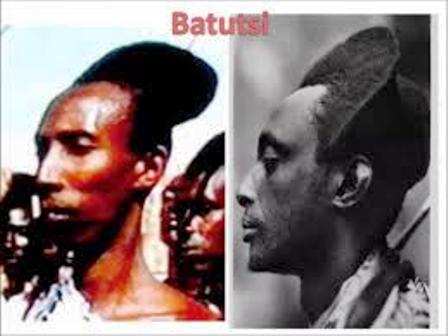
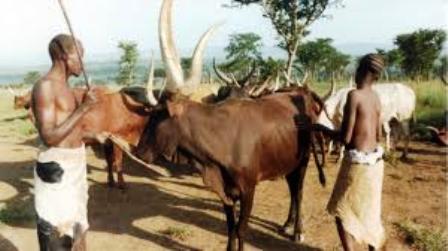
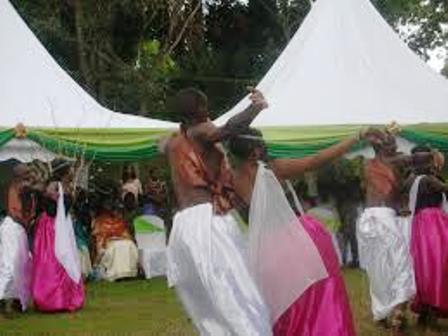
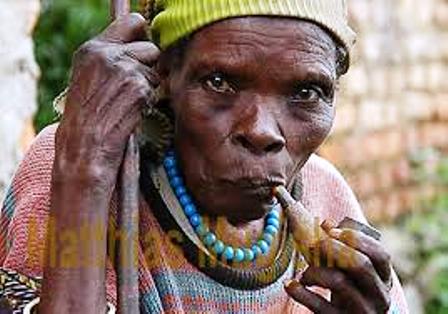
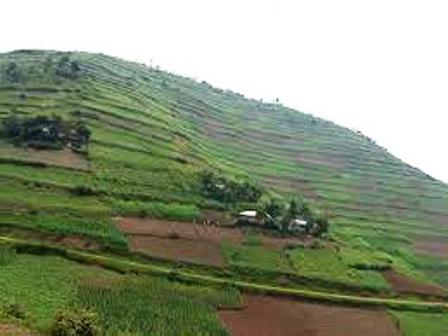
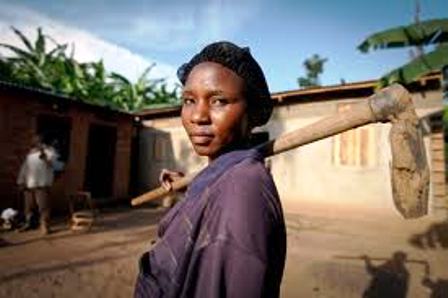
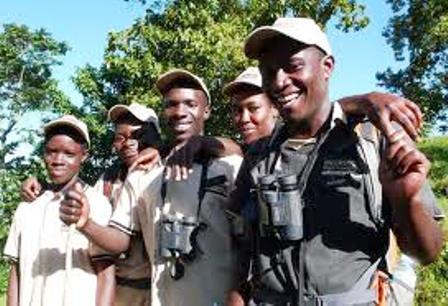
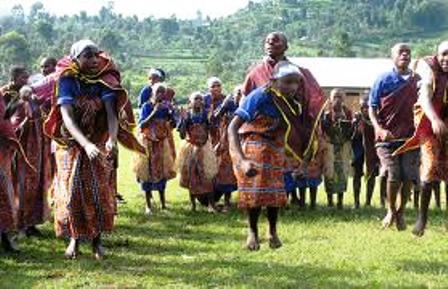
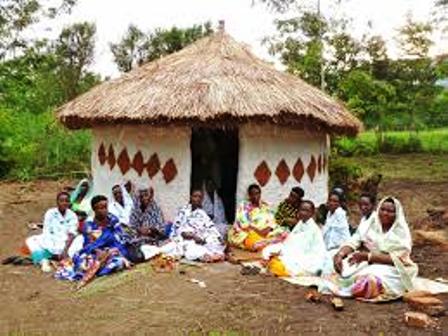
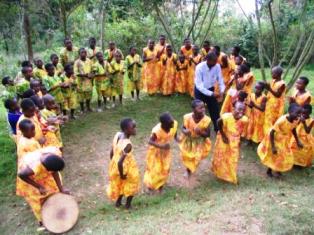
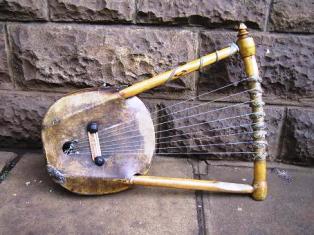
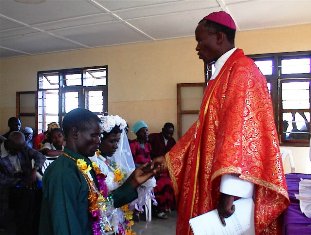







New! Comments
Have your say about what you just read! Leave me a comment in the box below.